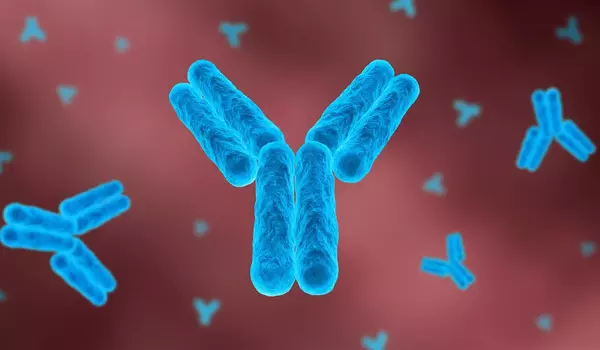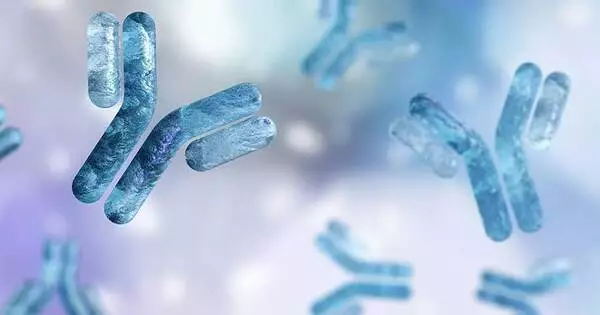Memory B cells are essential for providing long-term immunity following vaccination or infection. Researchers describe a distinct and novel subset of memory B cells that predict long-lived antibody responses to influenza vaccination in humans in a study published in the journal Immunity.
Anoma Nellore, M.D., Fran Lund, Ph.D., and colleagues from the University of Alabama at Birmingham and Emory University report that these effector memory B cells appear to be poised for a rapid serum antibody response upon secondary challenge one year later. The cells in this subset differ from all previously described memory B cell subsets, according to evidence from transcriptional and epigenetic profiling.
The presence of the FcRL5 receptor protein on the cell surface helped the UAB researchers identify the novel subset. A plethora of different cell-surface markers are used in immunology to identify and separate immune-cell types. FcRL5 acts as a surrogate marker for positive T-bet transcription factor expression inside the cells in the novel memory B cell subset. As different cell types grow and differentiate, various transcription factors act as master regulators, orchestrating the expression of many different gene sets.
The best vaccines induce the formation of long-lived plasma cells and memory B cells. Plasma cells live in your bone marrow and make protective antibodies that can be found in your blood, while memory B cells live for many years in your lymph nodes and in tissues like your lungs.
Fran Lund
FcRL5+ T-bet+ memory B cells can be detected seven days after immunization, and their presence correlates with vaccine antibody responses months later, according to Nellore, Lund, and colleagues. Thus, these cells may represent an early, easily monitored cellular compartment that can predict the development of a long-lived antibody response to vaccines.
This could be a boon to the development of a more effective yearly influenza vaccine. “New annual influenza vaccines must be tested, and then manufactured, months in advance of the winter flu season,” Lund said. “This means we must make an educated guess as to which flu strain will be circulating the next winter.”
Why are vaccine candidates developed so far in advance? According to Lund, pharmaceutical companies must wait several weeks after vaccinating volunteers to learn whether the new vaccine elicits a long-lasting immune response. “One possible outcome of the current study is that we may have discovered a new way to predict influenza vaccine durability that would provide us with an answer in days rather than weeks or months,” Lund said. “If so, this type of early ‘biomarker’ could be used to test flu vaccines closer to flu season and moving that timeline might give us a better shot at predicting the right flu strain for the new annual vaccine.”

The World Health Organization estimates that seasonal flu kills 290,000 to 650,000 people each year. In 2020, the global flu vaccine market was worth more than $5 billion. To understand the Immunity study, consider what happens after a vaccinated person comes into contact with a flu virus.
Following previous antigen exposure, such as hemagglutinin on inactivated influenza in flu vaccines, the immune system initiates a recall response dominated by pre-existing memory B cells that can either produce new daughter cells or cells that can rapidly proliferate and differentiate into short-lived plasmablasts that produce antibodies to reduce morbidity and mortality. These memory B cells are known as “effector” B cells.
“The best vaccines induce the formation of long-lived plasma cells and memory B cells,” said Lund, the Charles H. McCauley Professor in the UAB Department of Microbiology and director of the Immunology Institute. “Plasma cells live in your bone marrow and make protective antibodies that can be found in your blood, while memory B cells live for many years in your lymph nodes and in tissues like your lungs.
“While plasma cells can survive for decades after vaccines like the measles vaccine, other plasma cells wane much faster after vaccination, as seen with COVID-19,” Lund explained. “If that occurs, memory B cells become extremely important because these long-lived cells can rapidly respond to infection and begin producing antibodies.”
The UAB researchers examined B cells isolated from the blood of human volunteers who received flu vaccines over a three-year period, as well as B cells obtained from tonsil tissue after tonsillectomies. They used standard phenotype profiling and single-cell RNA sequencing to compare naive B cells, FcRL5+ T-bet+ hemagglutinin-specific memory B cells, FcRL5neg T-betneg hemagglutinin-specific memory B cells, and antibody secreting B cells.
FcRL5+ T-bet+ hemagglutinin-specific memory B cells were found to be transcriptionally similar to effector-like memory cells, whereas FcRL5neg T-betneg hemagglutinin-specific memory B cells exhibited stem-like central memory properties.
Antibody-secreting B cells must generate a lot of energy in order to produce antibodies, and they must also activate processes that protect the cells from some of the negative side effects of that intense metabolism, such as controlling reactive oxygen species and boosting the unfolded protein response.















